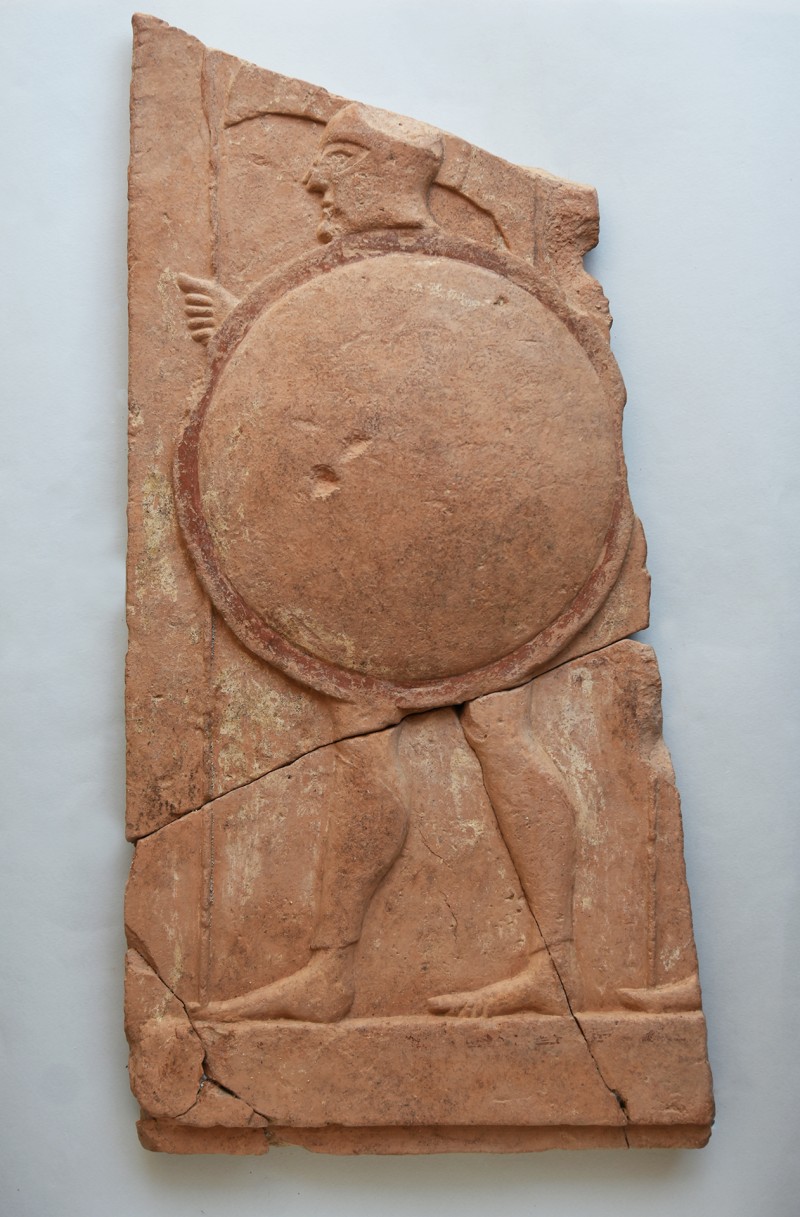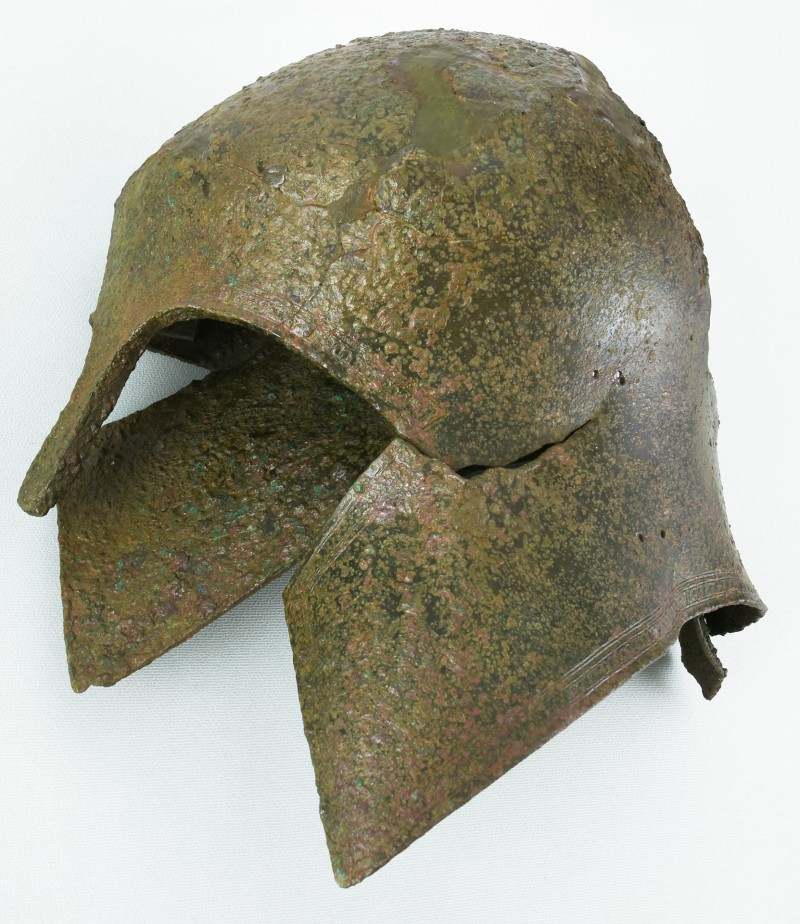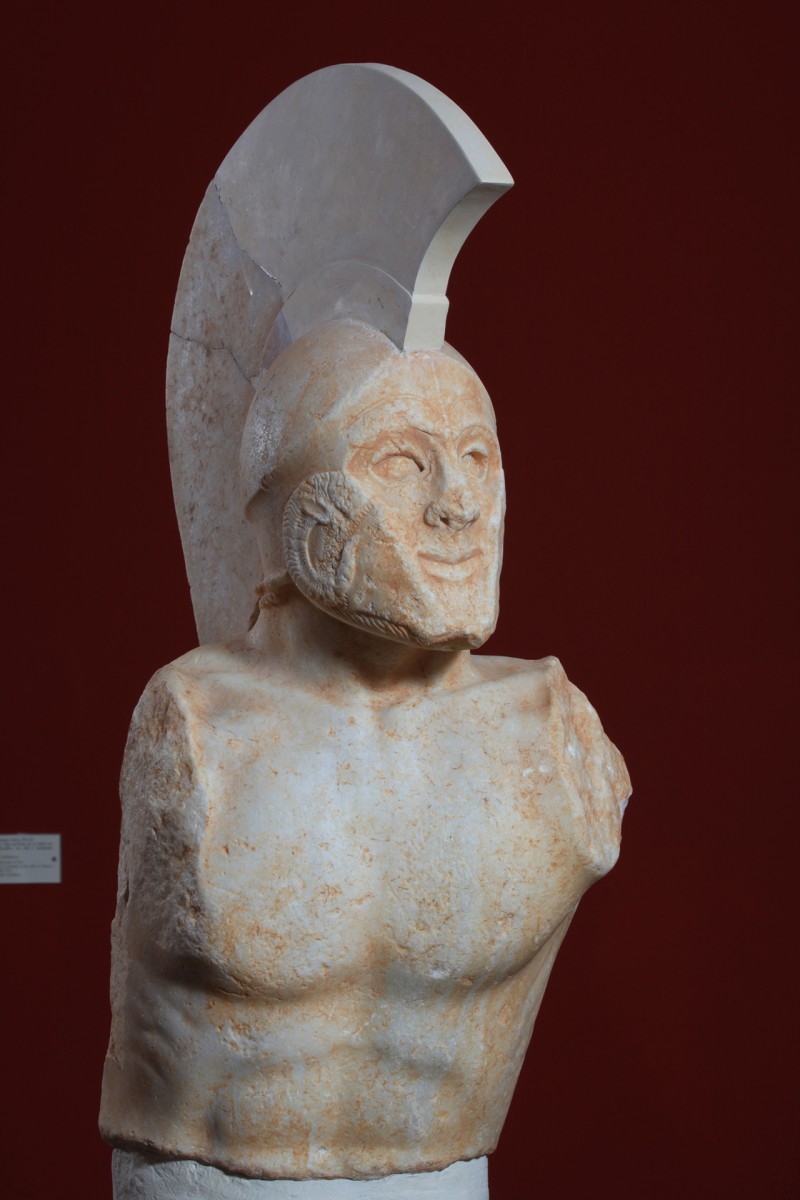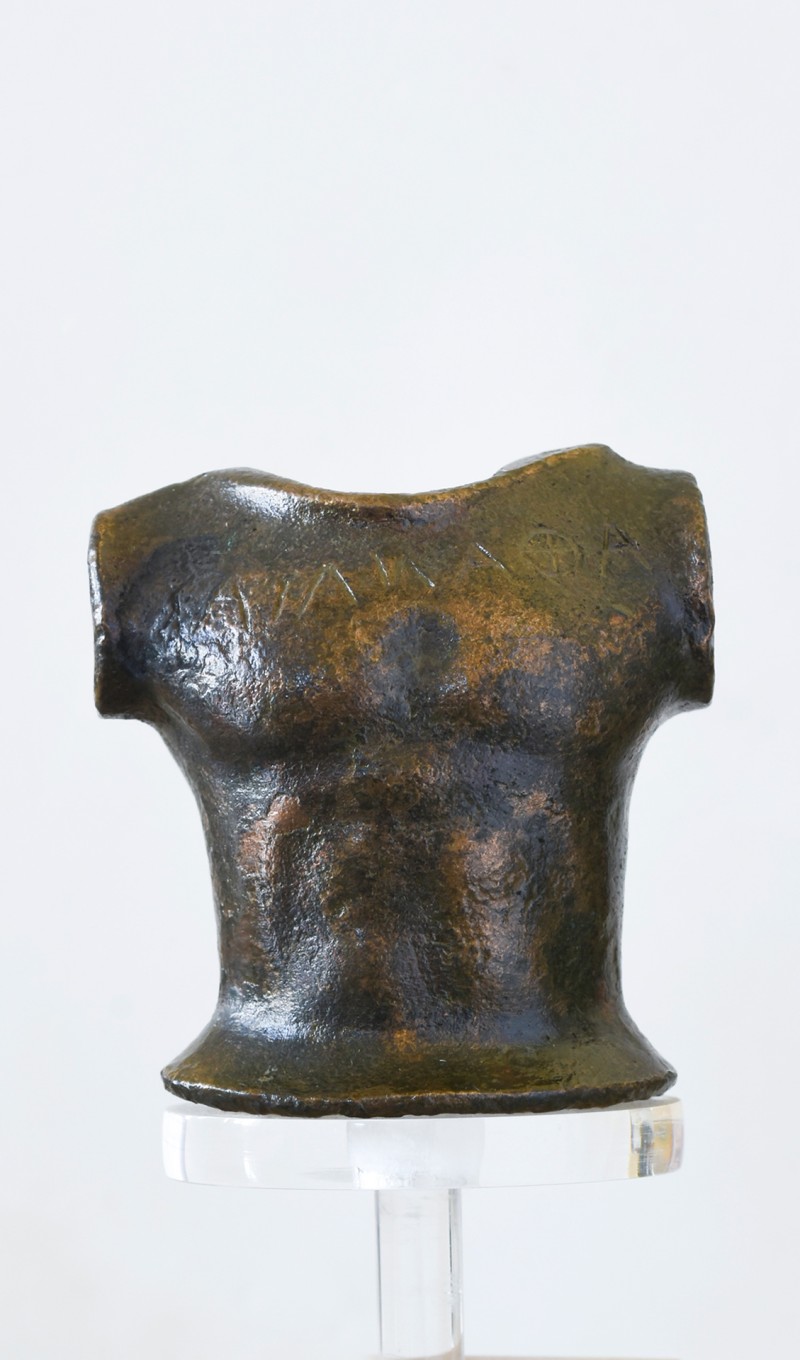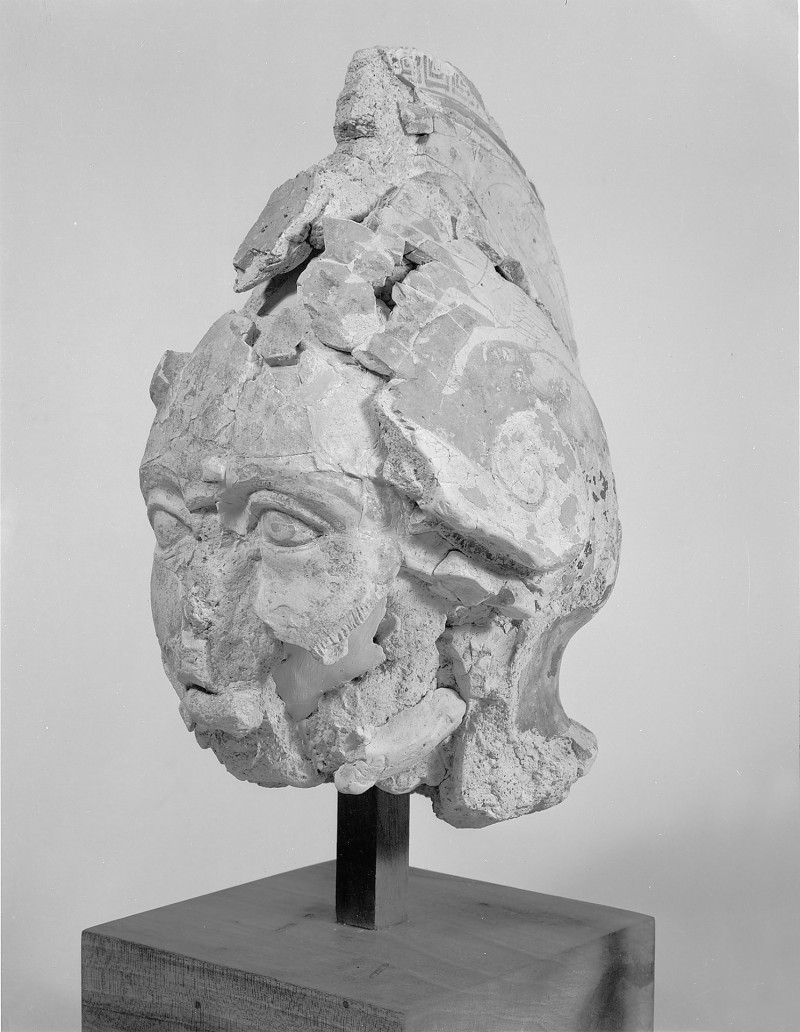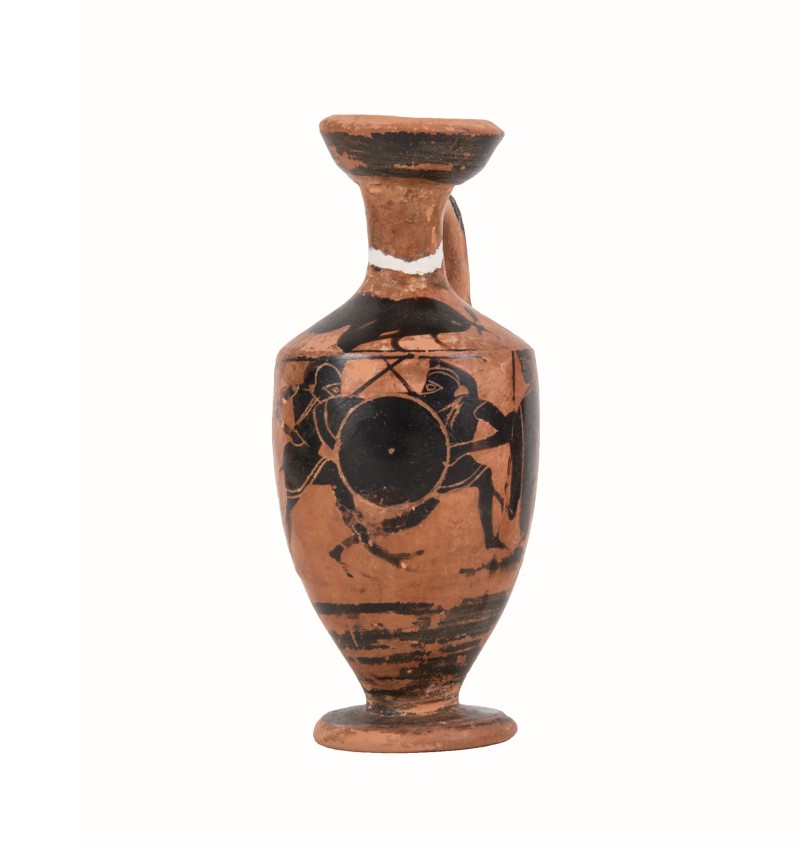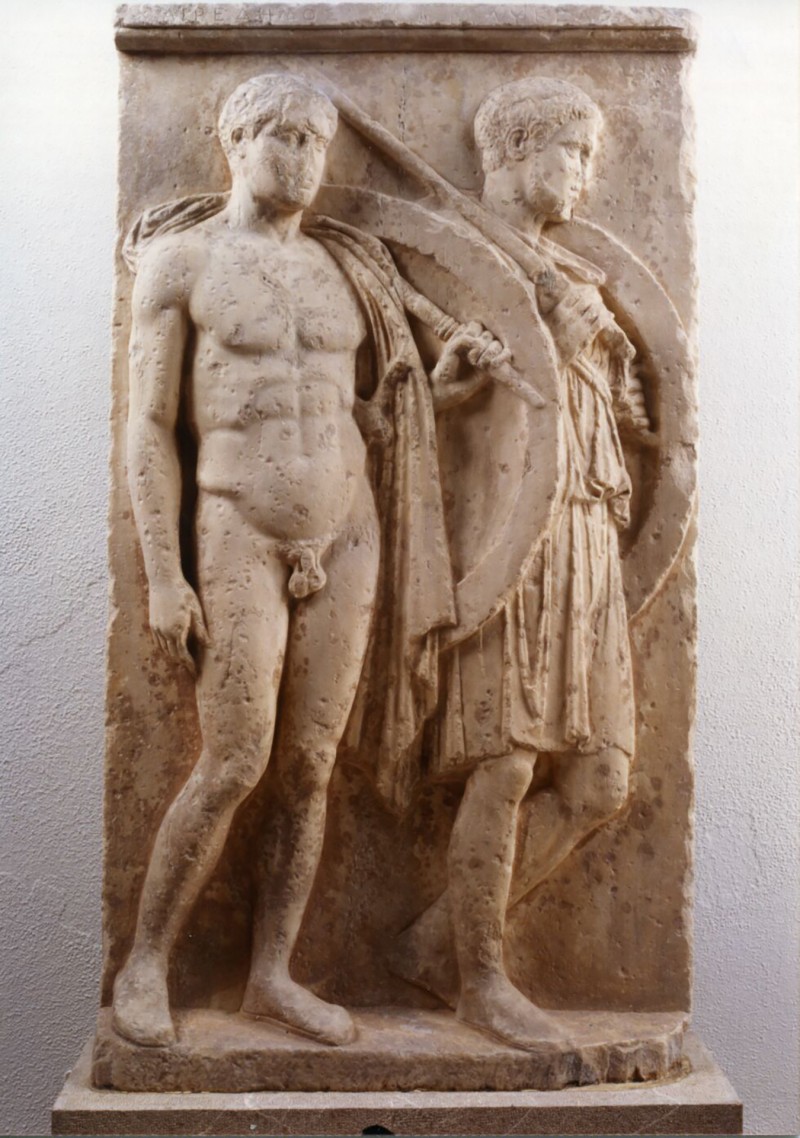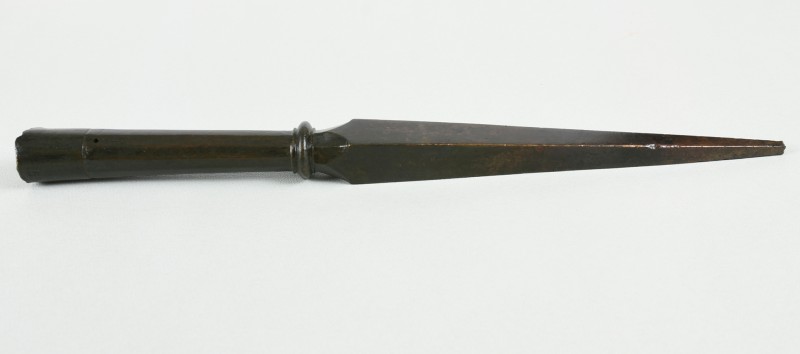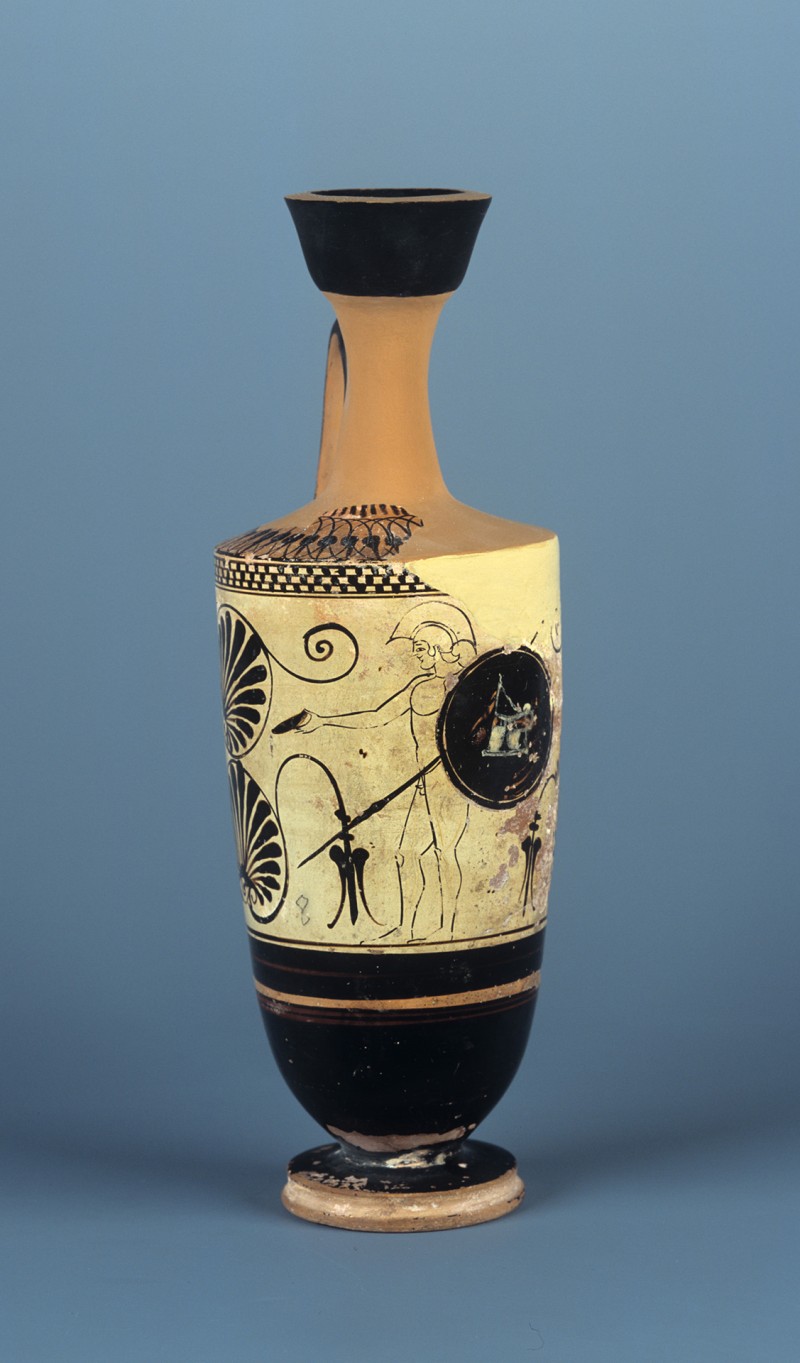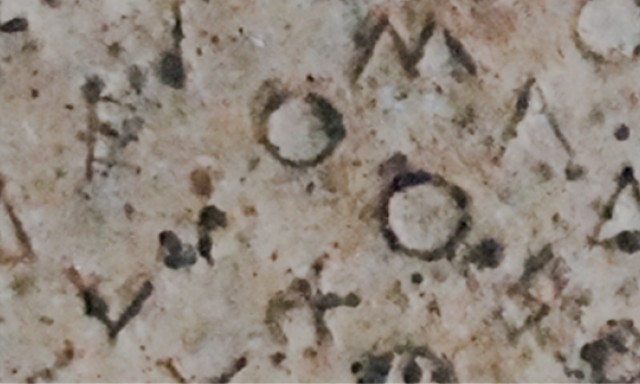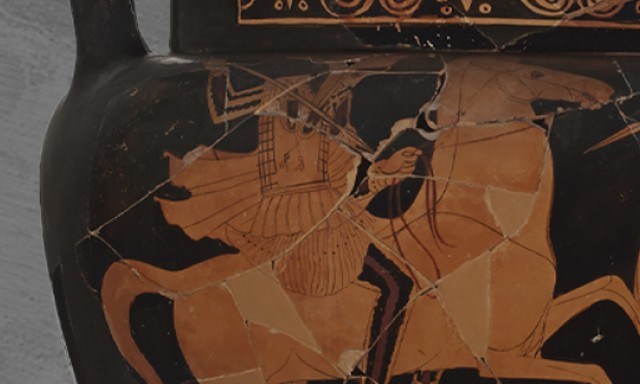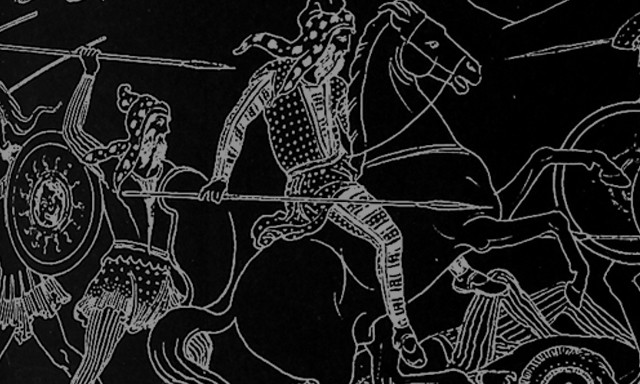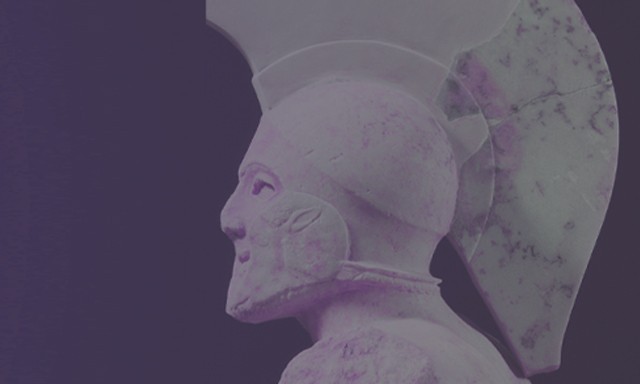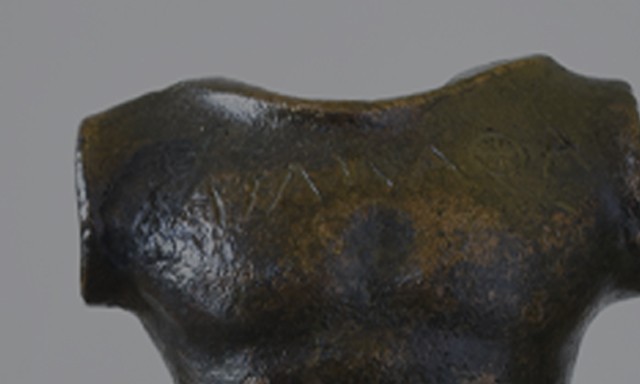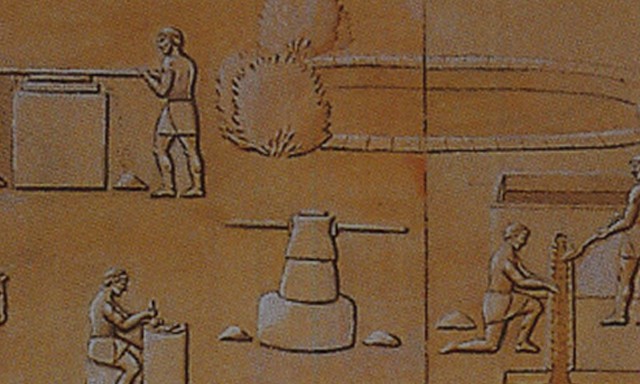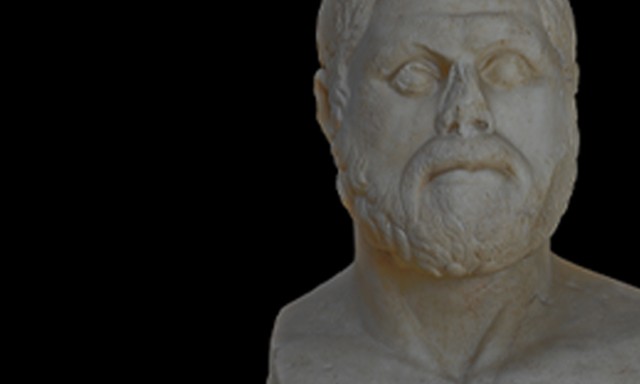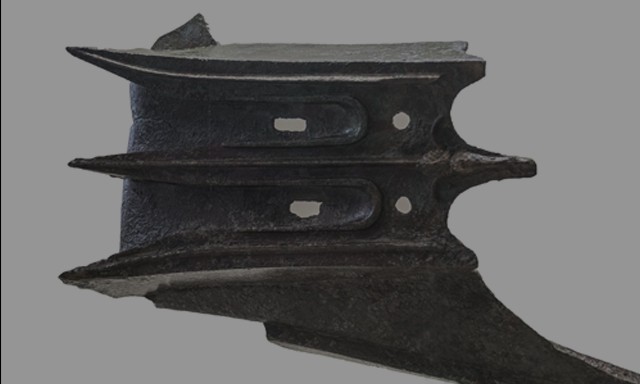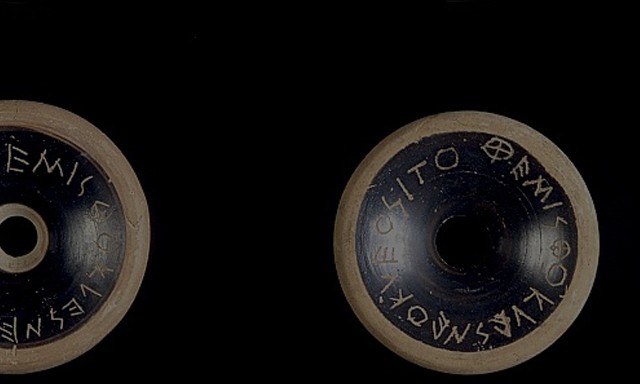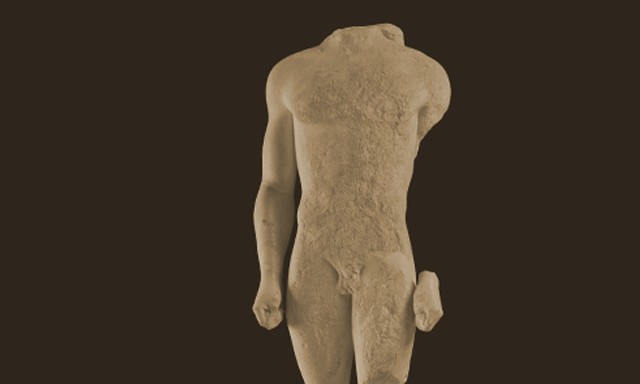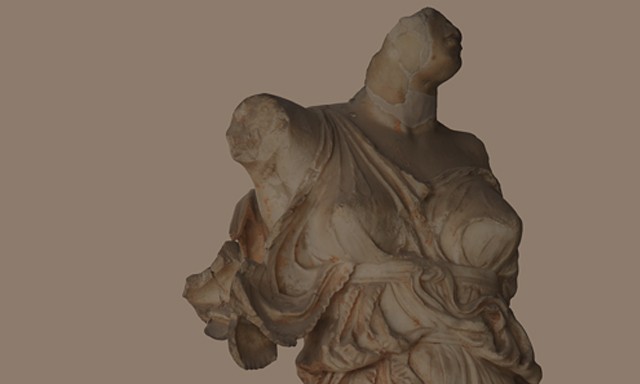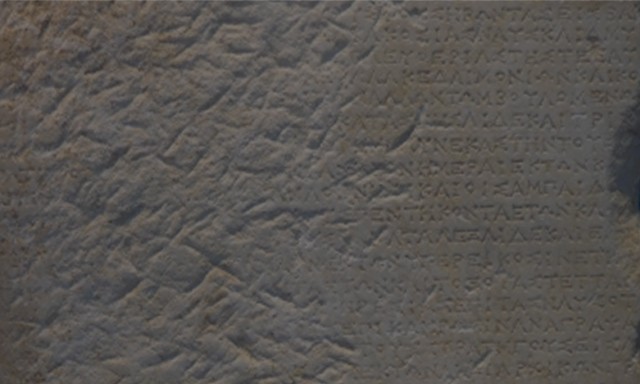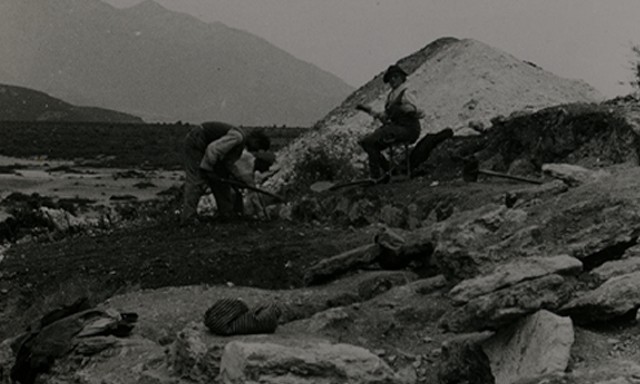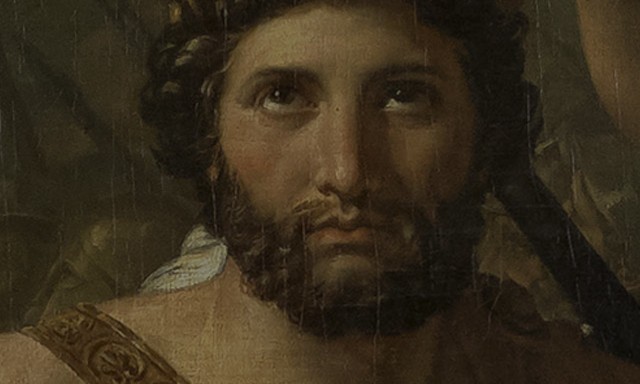CHAPTER CREDITS
The Greeks fought against the Persians to defend their land and freedom. Naturally, they would not have been able to withstand an opponent so numerous, if they didn’t have the proper training and developed know-how regarding their military gear.
The hoplites, accustomed to hand-to-hand combat, constituted a compact metal wall, the famous phalanx, a military formation which had been used for the first time by Miltiades at Marathon. The Spartan phalanx was considered as the most powerful of all, since the entire life of the Lacaedemonians was dedicated to the art of war.
The warriors wore Corinthian-type helmets, which covered the head and the neck, leaving free space for the eyes, the nose and the mouth; they also wore a metal breastplate, which protected them from the enemy spears and arrows. The hoplon, the semicircular or round shield, had a wooden core, was covered in bronze and was fastened firmly on the hand on two spots with leather handles. The warriors held the shield with their left hand, protecting not only themselves, but also the uncovered right side of their fellow warrior. With the other hand they held the spear, with a wooden shaft and a bronze spearhead; it was about 1.80 m. long and it allowed strikes to the enemy from a distance. The sword was used in case of a loss of the spear or in hand-in-hand fights.
The numerous and diverse Persian army lined up facing the Greek phalanx. Coming from the East, used to different weather conditions and environment, they bore a light, inadequate weaponry, to the exception, naturally, of the select unit of the Immortals.
CREDITS
DISCOVER THE EXHIBITS
Choose one of the objects of the exhibition
EXPLORE THE EXHIBITION
Choose a chapter of the Exhibition
